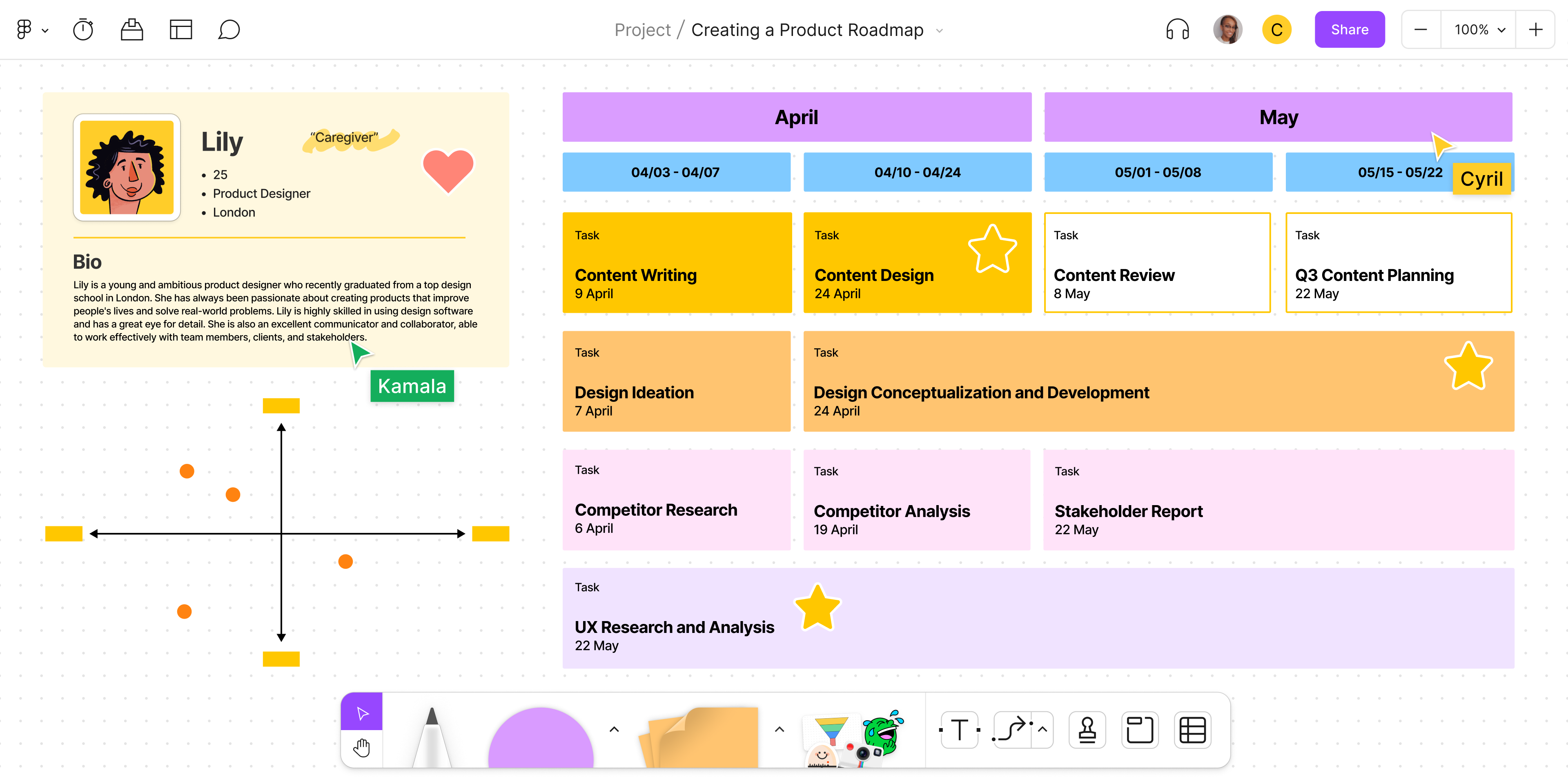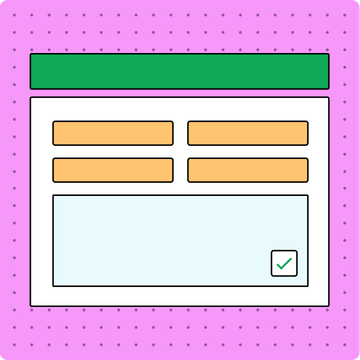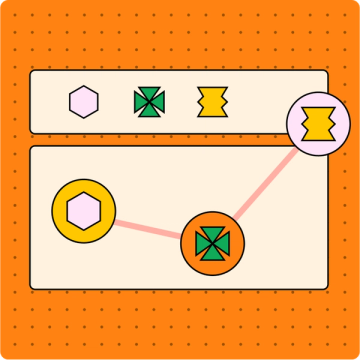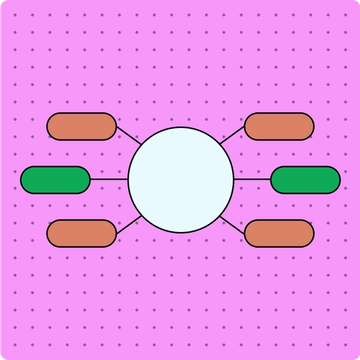How to create a product development roadmap

The journey from that first aha! moment to launching an actual product might seem intimidating. This is where a product development roadmap comes into play. Product development roadmaps are invaluable planning tools, breaking down a bold vision down into the steps necessary to get a product to market. Roadmaps help product development teams stay focused on the road ahead, and quickly adjust when work veers off course or out of scope.
What is a product development roadmap?
Get your next product effort off to a running start with a product development plan that clearly maps out your goals, priorities, and timelines. Making and adjusting plans is critical—over 80% of new products launched each year fail in the marketplace.

Product development planning doesn't have to be hard
Align goals, assign tasks and avoid potholes with this free product development roadmap template
3 key benefits of product development roadmaps
A product development roadmap can help you succeed where others falter in three key ways:
- Teamwork. On complex projects with many moving parts, product development roadmaps help teams stay organized, focused, and on track to achieve goals—and handle any bumps in the road along the way.
- Cross-functional collaboration. For product teams working alongside marketing or sales, product development roadmaps help everyone align around project goals and timelines.
- Visibility. At a glance, everyone can see how deadline-driven tasks support longer-term company goals. Roadmaps also let your C-suite see progress on any product, anytime.
Who is responsible for product roadmaps?
Product managers often take the lead on roadmapping—but on major launches, teams across the company may get involved. Marketing teams may share research with product teams, who might collaborate with go-to-market teams around upcoming product releases.
Pro tip: templates make your roadmap easy to follow
Do you keep your roadmap simple, or add detailed data? The choice is yours — but adding bulky info to your roadmap may make it harder to follow. To cover key information at a glance, try sketching out your roadmap with FigJam's product development roadmap template. This tool streamlines your mapping process from start to finish, for a clean look with clear details.
How to create a product development roadmap
Roadmaps help agile product teams stay the course for success — as long as you can provide the right amount of directions at a glance to support fast-moving teams. With many different types of roadmaps to choose from, decision paralysis can set in before you even get started. To jumpstart your roadmap, agile coach and podcaster Christian Strunk suggests this 3-step roadmapping process.
Step 1: Align around purpose and goals
Start with the basics: establish a purpose and goals everyone can get behind.
State your purpose.
Before you start diagramming, ask yourself : Why are you bringing this particular feature, release, or product into the world? A statement of purpose rallies your team around a common goal, and keeps you aligned throughout the project.
To help you answer this question, take a look at your research and user insights, including:
- Your user personas and their needs, pain points, and preferences
- Your customer journey, which you can sketch out with a FigJam customer journey map template
- Target market demand for your product, captured in a supply and demand graph
- Advantages your company has over potential competitors, outlined in a SWOT analysis
Outline your product development goals.
What do you hope to achieve post-launch? Do you want to drive revenue, or deliver a customer-requested feature? In these early stages, you don't need to have all the answers yourself. Take time to brainstorm with key project stakeholders, and create a mind map to identify shared goals and promising ideas.
Step 2: Set timeframes and milestones
So far, so good—but how long will it take to get your product ready for launch? For a realistic answer, start by making a basic timeline of your project from start to product launch. Product development roadmaps break this journey into feasible chunks, or sprints, marking progress along the way with key milestones.
Choose a launch date.
As you begin filling in your timeline, take launch date considerations into account:
- If and when competitors will be launching similar products
- Upcoming holidays that could drive product demand
- Available resources, including budget and talent
- Whether an agile or waterfall methodology might support your product development push for on-time delivery
Set realistic deadlines.
Consult with a variety of team members to set realistic expectations. For example, if you don’t know how long it takes to draft UX content, check in with your UX writer. Starting with manageable deadlines helps ensure product quality from start to finish—and spares everyone the pressure of a last-minute rush.
Establish milestones and metrics.
How will you know if your team is on track for success? To mark progress toward a successful launch, you can fill out a project plan with milestones associated with specific metrics.
Your key project milestones and metrics may include:
- Working minimal viable product (MVP,) validated by user testing
- Working prototype, supported by user testing data
- Beta testing, supported by QA and analytics
- Public release, evaluated with downloads and reviews
Step 3: Team up and execute
Now that you've mapped out your product plan, your team will want to know: who's doing what when? This is where a FigJam product development roadmap template is especially handy, with built-in tools to tag individual team members, set team priorities, and assign key tasks.
How do you know when your roadmap is good to go? Take it for a test drive with colleagues who won’t be directly involved in the project. Share your plan with them, and invite them to flag untapped resources, capacity issues, and feasibility roadblocks—and find workarounds.
3 ways to use roadmaps in product development
- Outline a product launch. If you're launching a new product, a product development roadmap can help you plan and coordinate the various tasks and activities required to bring the product to market.
- Track product updates. A product development roadmap can help you manage changes, deliver on time, and communicate updates to users.
- Manage short-term deliverables. When an issue or opportunity demands attention, roadmaps help you prioritize tasks to hit near-term deliverable deadlines, without losing sight of longer-term product strategy.
Get your next project on the road to success with FigJam
The best roadmaps are easy to recognize: they're the ones people use, share, edit, and update company-wide. FigJam's online whiteboard make it easy to:
- Jumpstart projects with designer-made, ready-to-use product development roadmap templates
- Invite people to roadmap together over chat or audio
- Interact on online whiteboards with comments, reactions, and emojis
- Include related resources, including design systems, diagrams, and user personas
Figma's collaborative whiteboards bring back the excitement of creating products together. Because successful product development is about the journey, not just the destination.
Sources
[1] https://www.svpg.com/market-fit/
[2] https://www.hotjar.com/product-forge/cross-functional-collaboration/
[3] https://suggested.co/blog/this-is-what-happens-when-you-share-your-product-roadmap
[4] https://www.scrum.org/resources/blog/tips-agile-product-roadmaps-product-roadmap-examples
[5] https://www.agilealliance.org/
[7] https://www.christianstrunk.com/blog/product-development-roadmap
[8] https://www.quantumworkplace.com/future-of-work/how-to-align-organizational-goals
[9] https://blog.hubspot.com/marketing/product-launch-checklist
[10] https://www.shopify.com/retail/product-testing
[11] https://www.hanoverresearch.com/reports-and-briefs/new-product-development-checklist-2
Keep reading

How to create a project status report
Whether you’re developing a new product or launching a marketing campaign, your company’s success hinges on keeping your project on track
Learn more

How to make a customer journey map
Learn how customer journey maps can help you sharpen design and marketing efforts, turning casual visitors into passionate brand advocates.
Learn more

How to mind map
How can you remember the important stuff and forget the rest? Learn how to mind map, and you’ll learn how to think more clearly.
Learn more




